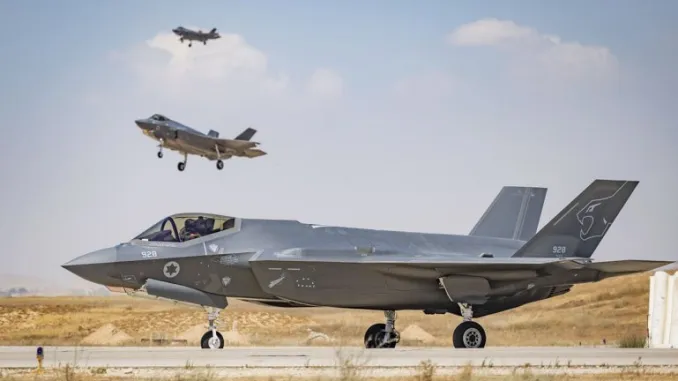In what appears to be a bold escalation in the ongoing Middle East tensions, Israeli media outlets have confirmed that fighter jets belonging to the Israeli Defence Forces (IDF) narrowly escaped being struck by advanced air defense systems reportedly deployed by Yemen’s Ansar Allah, also known as the Houthi movement, during a recent aerial operation.
According to details published by multiple Hebrew-language news platforms, the incident occurred amid Israeli bombing raids in the region, with specific reports suggesting that the jets involved were F-35 stealth fighters—Israel’s most advanced combat aircraft. Sources close to the matter disclosed that the near-hit was not just a random attempt but a carefully calculated response from Ansar Allah, indicating a notable improvement in the group’s air defense capabilities.
Military analysts in Tel Aviv have described the attempted interception as one of the closest threats ever recorded against Israel’s F-35 fleet, which until now had operated largely unchallenged over various conflict zones. The F-35 jets, known for their stealth and maneuverability, are widely regarded as the pinnacle of modern aerial warfare, making this development particularly concerning for Israeli defense strategists.
Israeli commentators are now raising questions about the origin and sophistication of the air defense systems used by the Yemeni group. Speculation is rife that Ansar Allah may have received external support, possibly from Iran or other sympathetic actors in the region, in acquiring radar and missile technologies capable of tracking fifth-generation stealth aircraft—a feat previously thought beyond the group’s reach.
This revelation underscores a growing regional dynamic in which non-state actors are increasingly deploying advanced military technology to challenge state-level powers. For Israel, the close call is expected to prompt a review of aerial operation protocols, especially in zones considered high-risk or within range of emerging anti-air capabilities in the Arabian Peninsula.
While the IDF has not officially responded to the reports, security observers believe that further details may emerge in the coming days, particularly as Israel continues to monitor potential retaliatory threats from its regional adversaries. Meanwhile, Ansar Allah has not issued a formal statement claiming responsibility for the attempted strike, but its past rhetoric and operational patterns suggest the group is keen on projecting its military relevance beyond Yemen’s borders.
As the situation develops, the international community is watching closely, given the potential implications for airspace security in the Middle East and the escalating proxy dynamics involving Israel, Iran, and allied militant groups across the region.







